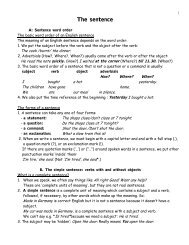Punctuality: How Airlines Can Improve On-Time Performance
Punctuality: How Airlines Can Improve On-Time Performance
Punctuality: How Airlines Can Improve On-Time Performance
You also want an ePaper? Increase the reach of your titles
YUMPU automatically turns print PDFs into web optimized ePapers that Google loves.
“Conventional”<br />
Root Cause Analysis<br />
This category covers the<br />
conventional methods of<br />
analysis used in most airlines,<br />
for example, delay code<br />
frequency, fishbone diagrams and<br />
correlation analyses.<br />
In the initial stages, these<br />
methods can help identify the<br />
broad picture and provide a first<br />
cut understanding of the major<br />
problem areas.<br />
These methods also work<br />
well to generate agreement in<br />
cross-functional discussions and<br />
workshops, as they are easy to<br />
understand and based on the<br />
immediate experience of staff.<br />
Many airline executives distrust<br />
the delay codes reported by the<br />
front line. Nevertheless, they are<br />
helpful to highlight major problem<br />
areas. A pragmatic interpretation<br />
is that systematic failures in<br />
delay code allocation are at least<br />
consistent over time. Therefore,<br />
they can provide data on delay<br />
patterns that highlights short- and<br />
long-term trends in certain “delay<br />
areas”.<br />
When using delay codes, it is<br />
important to understand that they<br />
will not provide information on<br />
the upstream problems that may<br />
have had more influence in creating<br />
the delay than the reports<br />
suggest. Still, delay codes often<br />
represent the best quantitative<br />
knowledge on delays that is available<br />
in many airlines.<br />
Exhibit 7. Leveraging Front-Line Observations in Root Causes Analysis<br />
Late<br />
Boarding End<br />
Source: Booz·Allen & Hamilton<br />
Check-in of hand luggage<br />
at gate delays process<br />
Boarding control<br />
break-down<br />
ROOT CAUSES<br />
Passengers refuse<br />
to check in luggage<br />
Late connecting<br />
passengers<br />
To identify and understand the<br />
root causes it is necessary to<br />
leverage the knowledge of the<br />
staff. The people working everyday<br />
in the key processes do know<br />
many of the root causes but this<br />
information is often not reported.<br />
Listening to them one by one may<br />
be frustrating, but their individual<br />
statements are like pieces in a jigsaw<br />
puzzle that reveal the true<br />
picture when put together. Exhibit<br />
7 shows an example of the<br />
traditional fishbone diagram that<br />
can be used to put staff statements<br />
into perspective and trace delays<br />
to their root causes.<br />
<strong>On</strong>e thing that is often forgotten<br />
is to analyze the good days.<br />
There is an untapped resource of<br />
information, often neglected by<br />
solely focussing on a problem-<br />
Late boarding<br />
announcement<br />
Long discussions<br />
with passengers Etc.<br />
High baggage theft rate<br />
at destination airport<br />
in developing country<br />
11




